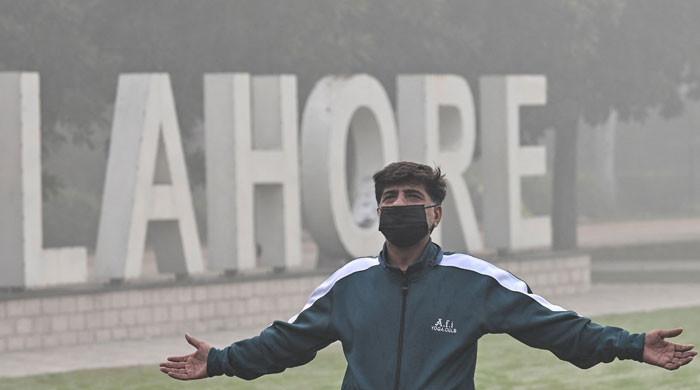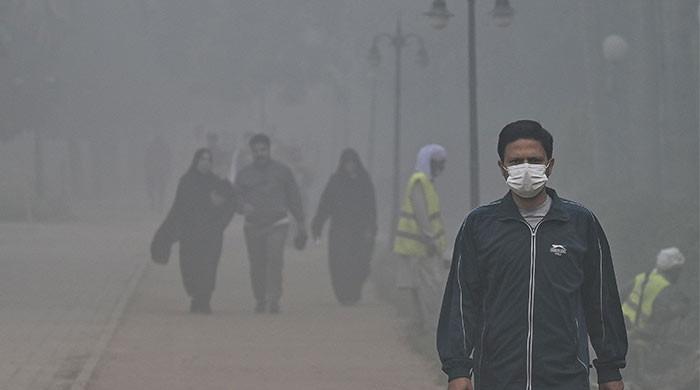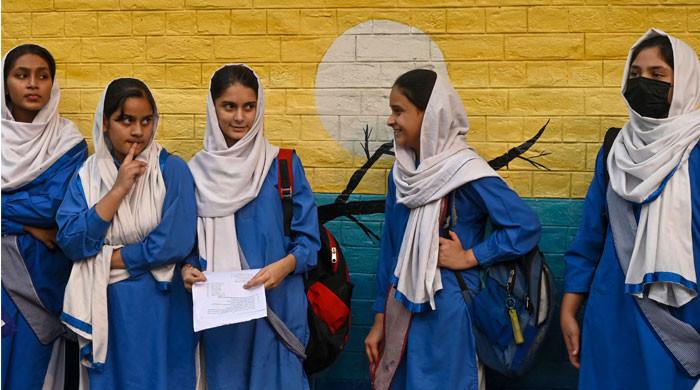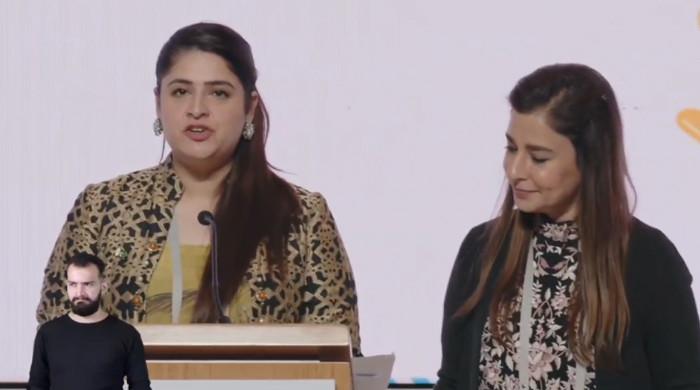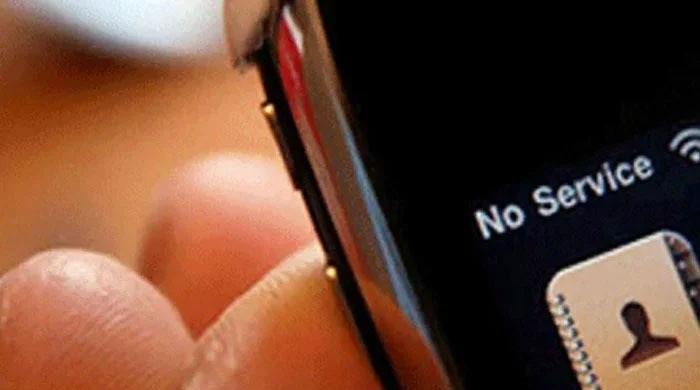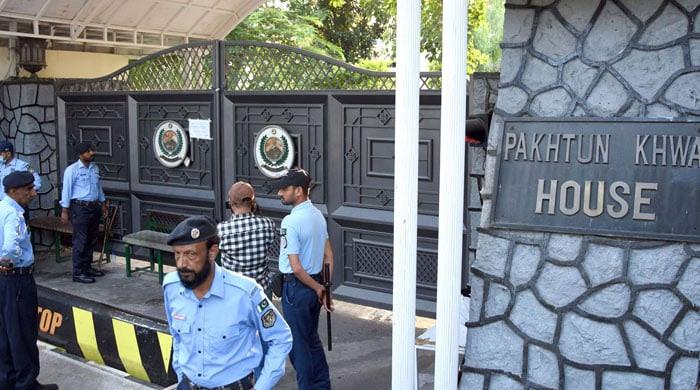Sindh to impose targeted lockdowns in coronavirus hotspots
Sindh govt to enhance testing and improve health facilities at isolation centres by making available more high dependency unit (HDU) beds at isolation centres
July 05, 2020
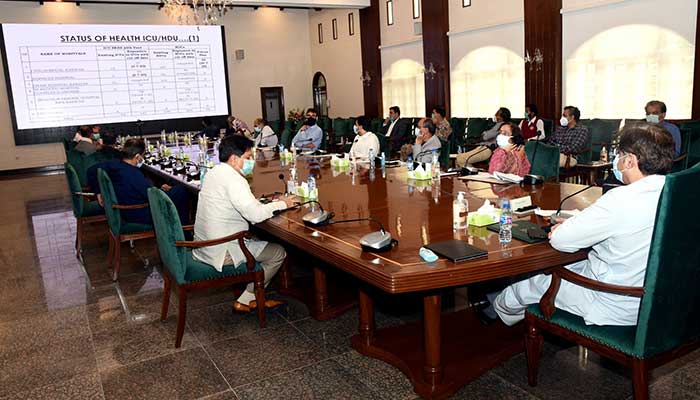
KARACHI: The Sindh Task Force on COVID-19 announced Saturday the provincial government would impose targeted lockdowns in coronavirus hotspots, enhance testing and improve health facilities at isolation centres by making available more high dependency unit (HDU) beds at isolation centres in the province.
Presided over by Chief Minister Syed Murad Ali Shah, the Sindh Task Force on COVID-19 heard experts and officials and discussed various ways to slow down the spread of the coronavirus in the province.
The meeting decided to promote the use of masks through advocacy, ensure free availability of masks, use a “carrot and stick” policy in this regard, and put in place targeted lockdowns in areas where the transmission of the virus was very high.
On the question of the lockdown, the meeting observed that Sindh could not decide against the “national discourse”, so it was important to take decisions to slow down the spread of the coronavirus among the people, and in this regard, preventive measures and advocacy should be used to convince the people to use masks, follow social distancing.
The chief minister said they had decided to convert 8,672 isolation beds into HDU beds in more than two phases, while more ventilators would be bought to enhance the ICUs capacity in the province. At present, the provincial government has 503 ICU beds with ventilators and 1,810 HDU beds.
'Sindh govt has performed a lot better in testing'
Shah said his government had tested 300,247 samples till June 3, and of them, 62,476 had tested positive for COVID-19, while during the corresponding period Punjab conducted 286,049 tests and detected 54,057 cases, KP tested 93,377 samples and detected 17,479 cases, Islamabad conducted 90,557 tests and detected 10,703 cases, Gilgit-Baltistan conducted 5,100 tests and detected 825 cases, Balochistan conducted 26,008 tests and detected 6,324 cases, and AJK did 10,351 tests and found 959 positive cases.
“This shows that the Sindh government has performed a lot better in the area of testing as compared to other provinces and the Islamabad Capital Territory (ICT),” he said.
The chief minister made it clear that the comparison with the other provinces was not aimed at criticising them, but it was being made to assess and evaluate the performance of the Sindh government. From June 1 to July 3, 2020, 28 deaths were reported in AJK, 75 in Balochistan, 17 in Gilgit- Baltistan, 102 in Islamabad, 529 in KP, 1,347 in Punjab and 987 in Sindh.
“This is clear that our death rate is lower in terms of patients and population than what it is in other provinces,” he said, adding the recovery rate in Sindh was also better than it was in the other provinces.
“During this period, 518 patients recovered in AJK, 3,824 in Balochistan, 689 in Gilgit-Baltistan, 8,441 in Islamabad, 12,608 in KP, 35,833 in Punjab and 37,098 in Sindh. Our case fatality rate (CFR) stands at 1.57%, while in Punjab it is 2.49%, in KPK 3.03%, in Gilgit- Baltistan 2.06%, in Balochistan 1.19% and in AJK 2.2%.”
“If the fatality rate is compared keeping in view the number of patients and population of the province, Sindh has the lowest rate because of a better healthcare system,” Shah said.
Giving a comparative analysis of tests per million people, he said the Sindh government had an edge over other countries of the region. The chief minister added that said Sindh had tested 10,047 people per million, while Pakistan’s per million tests came to 6,115, India’s 6,737, Bangladesh’s 4,981, Sri Lanka’s 5160 and Afghanistan’s 1,908.
CM Murad noted that the testing capacity, which had been only 80 per day in February 2020, was increased to 300, then to 1,200, 4,200, 6,500, 8,750, 11,450 and now to 14,050, which itself was a record of the provincial government with meagre resources.
Analysing three weeks of June 2020, he said that in the second week of June, 51,086 samples were tested, which resulted in 15,221 cases, and 8,916 patients recovered. In the third week of June, 67,534 samples were tested, which diagnosed 15,095 cases, and 10,702 patients recovered. In the fourth week of June, 34,344 samples were tested, which produced 7,975 cases, and 7,110 patients got better.
Talking about the first week of July, the CM said 18,934 samples were tested, which detected 4,806 cases, and 3,988 patients recovered.
“This shows that we kept enhancing the testing capacity, educated people about the SOPs and succeeded in bringing down the detection rate and enhancing the recovery rate. This is the success story of our policy and better healthcare system,” he said.
'We cannot screen everybody'
Talking about the challenges to his government, Shah said that it was impossible to predict how many cases were there in a defined geographical area. The majority of cases were asymptomatic (more than 80%), he said and added every country had faced issues to implement SOPs.
“We cannot screen everybody; therefore, we have adopted a policy of targeted screening. We don’t have unlimited resources; therefore, we have to allocate resources where minimum expenses on health could be ensured.”
Shah, giving the example of District East, said that in Gulshan Town 247 and in Jamshed Town 214 cases were detected on June 17 when a selective lockdown was started. On July 2, when a selective lockdown was lifted, 283 cases were detected in Gulshan Town and 90 cases in Jamshed Town.
During the lockdown, 66 patients recovered in Gulshan Town and 187 in Jamshed Town, which meant that the lockdown had turned to be the only option to contain the cases, the CM said, adding that they had decided to purchase more ventilators and more HDU beds with low and high oxygen arrangements.
The meeting decided to convert 8,672 isolation beds into HDU beds in more than two phases. He asked the health minister to take the necessary measures to reduce deaths from strokes, pulmonary embolism and seizures.
Originally published in The News




